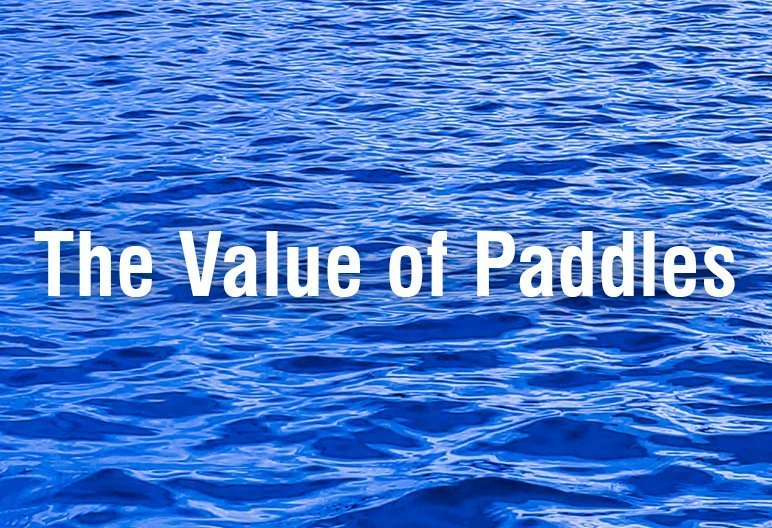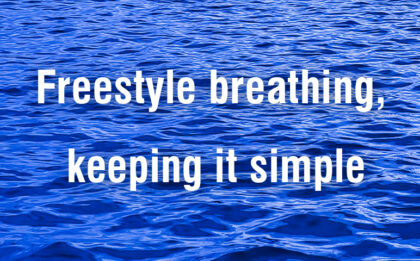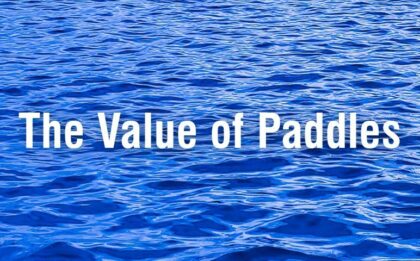Paddles are my favorite training tool. They are great for teaching stroke mechanics and are also an important tool in training. For as much as I like paddles, it is important to use them, like most things, wisely.
As a teaching tool, paddles help increase a swimmer’s feel for their pull. When working with swimmers on changing their catch or pull paddles will slow down their pull rate, and the increased resistance provided by the increased surface area makes them feel more distinct. These combined often give even my students who generally shrug their shoulders when I ask them what they felt like can usually start feeling more of what they are doing.
As a training tool, paddles allow you to pull more water, which is inherently harder to do, increasing your workload.
There are a few things to be careful about in paddles:
Don’t overdo. You need to work up the distance you swim with paddles. Doing more than you are ready for can create shoulder strain.
Choose the size of your paddles wisely. Paddles that are larger than a swimmer can drive through the water will often cause the swimmer to drop their elbow (a major stroke flaw) to take the pressure off of the pull.
While many swimmers will not find this one a problem, I don’t like pulling either first or last in practice. I want the shoulders to have had more warm-up before you put on paddles. On the reverse end, I don’t want to stop swimming immediately after paddling work (though a longer than normal warm-down can solve that problem).
As a rule of thumb pulling, I would recommend keeping your pulling to no more than 15% of your workout for those working out without an experienced coach’s guidance.




